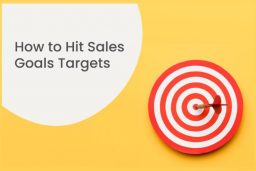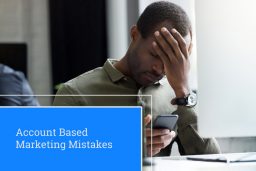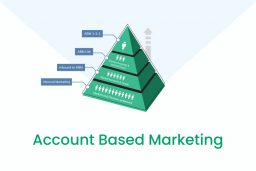
Why do you need Sales Enablement?
To find out who is more likely to buy, don’t wait to get the list of your target audience for cold calling, but create something around your product to attract them, to make them call you!
In order to get that happen your sales and marketing team need to work in tandem, which generally takes a lot of discipline on the way, especially in the case of B2B organizations. This is where you need sales enablement strategies, to make these two important departments work agreeably.
Sales enablement is basically a playbook that makes the process of selling your product easier. It primarily consists of the following elements:
sales content, sales cadence, tools and technologies that capacitates sales team to sell efficiently.
Sales Enablement versus Sales Operations
Many times the term sales enablement gets confused with sales operations. Sales enablement is not sales operations even though the end goal of both the strategies is to keep your sales numbers steady and consistent. Before we dive deeper into sales enablement, let’s fix this difference.
– Your sales ops manager will oversee the end-to-end sales process, specifically, the daily sales activities of setting up the metrics, planning and defining the sales territory, fueling the sales leader with data-driven insights.
– Since managing and meeting sales targets is a complex process in today’s B2B organizations, sales operations cannot function without sales enablement. By streamlining the process with the inclusion of better tools, training materials, content and technologies, sales enablement supports sales operations in running its daily activities.
– It wouldn’t be wrong to say that sales enablement is the subset of sales operations and it is an important functional group that a sales operations manager is required to work jointly with.
If yours is a B2B organization, at what stage would you add your first sales enablement hire? This is the question often encountered by sales leaders.
Thus far if you have not brought in sales enablement manage in your organization, now is the time to do it.
When to start sales enablement?
There are two different schools of thought.
Option Now versus Option Later– One says to start at the beginning and the other opinion is to hire someone much later after you have built a great and huge sales team. Let’s look at the pros and cons.
If you hire someone very late i.e. if you go with the Option Later, after having built a large sales team of say 50 reps, it would be difficult for the Sales Enablement Manager to adjust and to get his/her voice heard. Afterall SE manager is responsible for communicating and for being the liaison between your sales execs and the sales manager. In this case, there would be differences of opinion and SE won’t be able to act as the change catalyst, the one that your organization needs.
Customize and set roles for your Sales Enablement hire
As mentioned earlier, sales enablement could mean different things and because it is a new function it is still evolving. As a sales leader, you can decide what you want the SE manager to do. You can start with the following roles and steps for your SE manager:
- Provide essential training to sales team
To improve the quality of sales conversations and to make your sales team effective in selling, it falls under the realm of sales enablement manager. It is on SE Managers to formulate sales onboarding best practices, have sales training and coaching plans in place.
- Developing and packaging right content
Yes, content curation and creation comes under the purview of Marketing but sales enablement can act as the communication channel between the marketing and sales reps’ content requirements. With them, in between, there is an easy and seamless flow of content requirements and its fulfillment. SE managers can then track the usage and influence of the content and feed the performance data to marketing who can further enhance the content. They can also map content to every stage in the sales cycle. For example, case studies, whitepapers to the prospects, sales presentations and testimonials to the opportunities and product information, new offers to the existing clients.
- Implementing tools
Tools need not be CRM alone, it could be creating sales automation tools if needed to decrease sales cycle length. Apart from having a full understanding of CRM features, SE should be able to integrate the existing CRM with various other systems, if needed. It also means creating guidelines for the sales managers so that they could effectively engage with their sales reps. It can be implementing content and contact management software.
- Aid in process improvement (sales process, sales methodology, functional handoffs).
With sales enablement in place, the roles and ownership in sales organizations become much more streamlined. For example, sales ops are the non-selling entity who is responsible for running daily sales task, win rates lie with the sales managers and the onus on the sales enablement leader is to help each one achieve their goals.
Their job is to continuously improve the sales process, analyze and align it with the sales target.
How to do it right?
Start as early as possible
It doesn’t matter what your revenue target is and how big or small your sales team is. If you have just started with a rather small sales team, you certainly can’t afford to hire SE manager from outside. To start with, what you can do in this case is to have one of your best performing sales rep or account executives act primarily as sales enabler. As soon as you add a couple of more reps in the team, it is best to designate someone from inside your organization as SE manager.
As you grow you might have to seek help from some onboarding and ongoing learning programs for bigger organizations. They will use your data from previous years to help you hire some the best fit who will eventually ramp up your sales enablement functions.
Build a proper sales team with hierarchy
Set the hierarchy and roles right, without much overlap. As mentioned earlier, a lot of these roles such sales ops manager, sales enablement managers may sound similar to each other. With this, the chances of responsibilities being in conflict are always high. If yours is a business with more than $10M in ARR then it’s time to build a hierarchy of sales functions. Start with Sales Manager, under which you can have Sales Ops Manager and Sales Enablement Managers serving your SDRs and AEs. With the hierarchy set, clearly define the responsibilities. For sales enablement you can create the following responsibilities:
– onboarding
– weekly pipeline and forecast meetings
– coaching and measuring the outcomes
– providing sales content
– providing data-driven insight to head of sales
– facilitating sales reps with necessary sales tools and technologies
Have you made sales enablement the foundation of your sales organization by hiring an external consultant or by recruiting someone from your existing sales team? Either way, don’t wait too long to hire your first sales enabler. We would like to hear your thoughts on each scenario.
Related Posts:




